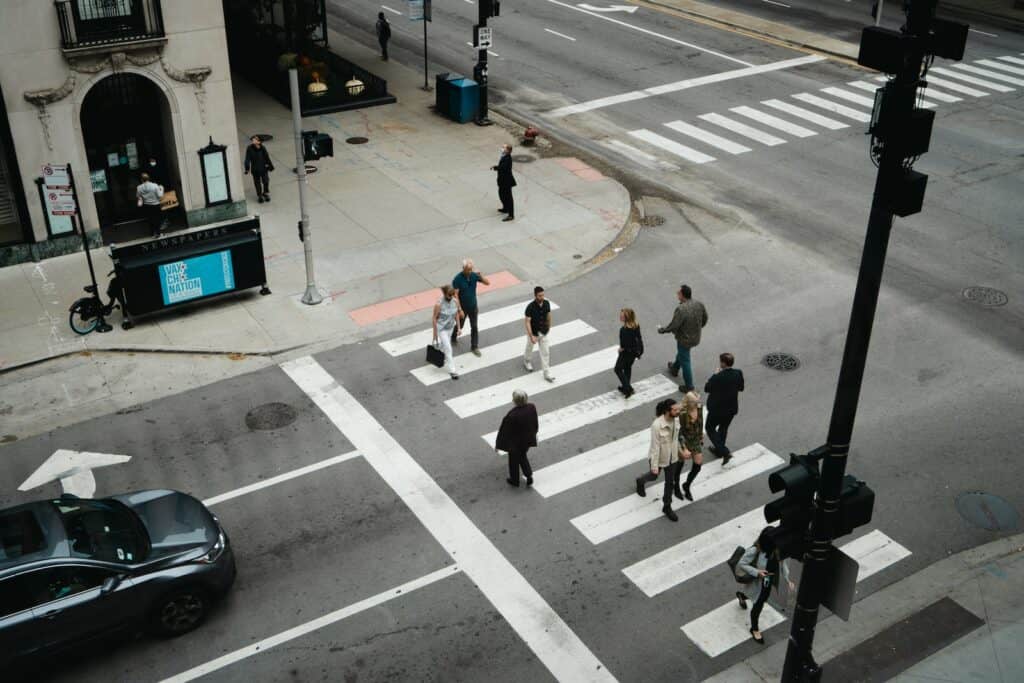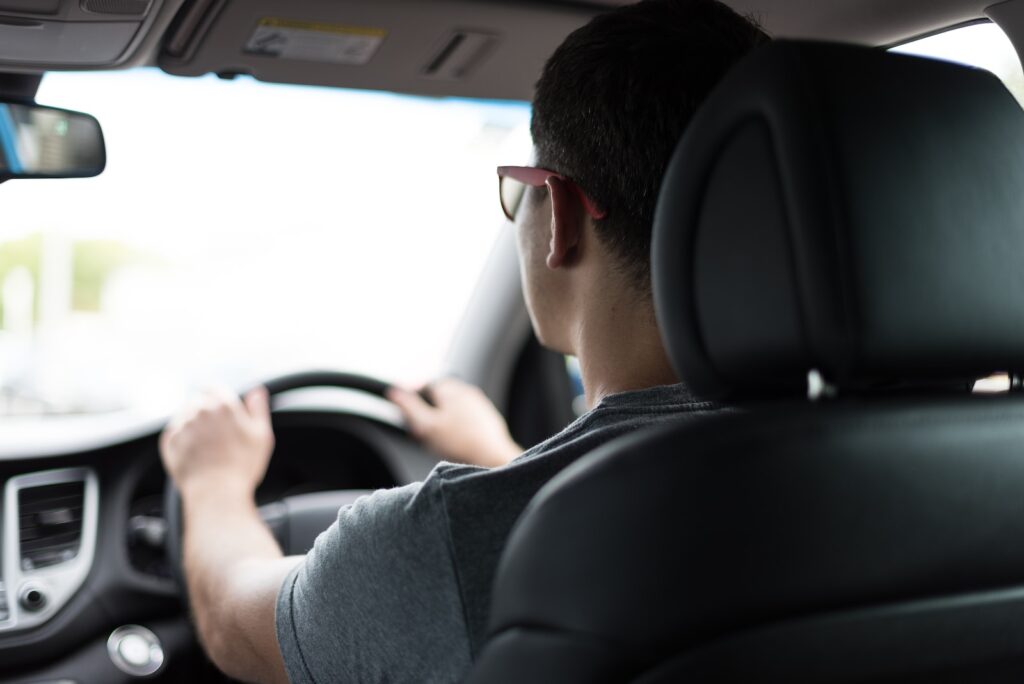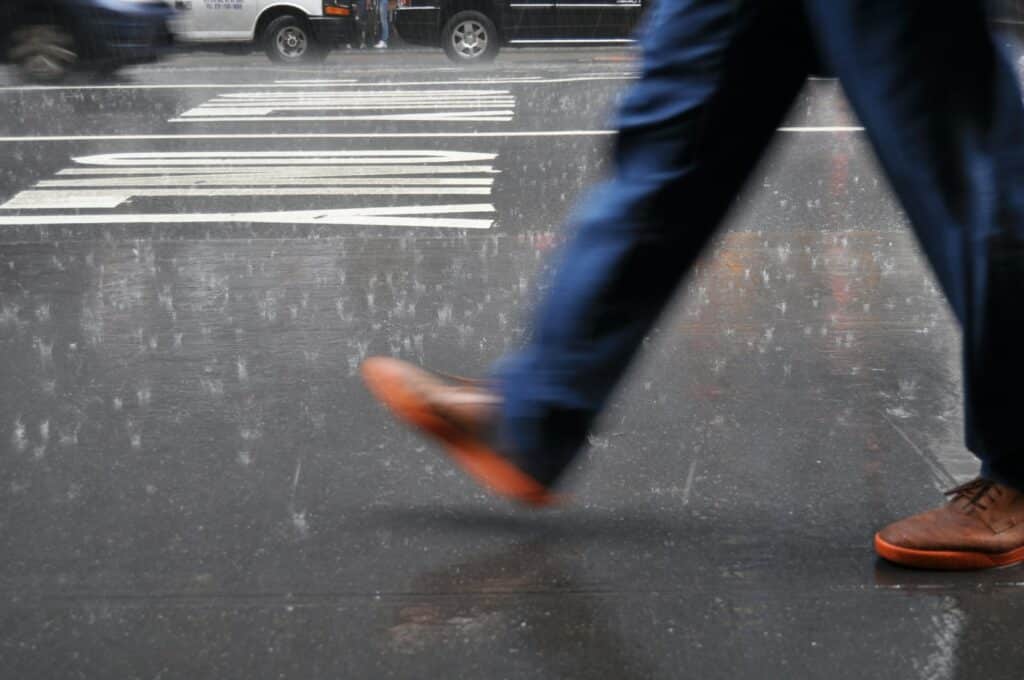Our everyday commute includes a significant amount of walking, yet it is crucial to maintain your safety while you navigate the busy streets. Mastering these walking rules on road guidelines can make your trip safer and more pleasurable. In this complete tutorial, we’ll delve into essential pointers that improve your safety and simplify daily strolls. These tips will prepare you for a self-assured and secure walk on the road.
Table of Contents
1. Stay on the Right Path
Remember to walk on the correct side of the road at all times, usually walk facing the traffic defines the correct side. When you follow this guideline consistently, you help to make the commute easier and more orderly for everyone. Walking on the appropriate side of the road helps to maintain a consistent routine, reducing collisions and improving the overall commuting experience.
Whether you’re navigating through bustling city streets or quieter suburban lanes, remember that staying on the right path isn’t just a matter of convenience—it’s a crucial step toward creating a safer and more efficient pedestrian ecosystem.
2. Use Pedestrian Crosswalks

Crossing the street at authorized pedestrian crosswalks is more than just a requirement; it is a critical safety precaution. These designated spaces are intended for pedestrians to safely cross, and automobiles are more likely to anticipate and yield towards walkers in these places. Before entering the road, always wait for the traffic light to turn green and make sure all vehicles have come to a complete stop.
3. Avoid Distractions
In an era dominated by smartphones and gadgets, it’s easy to get lost in a virtual world. However, when walking on the road, distractions can prove hazardous. Keep your devices tucked away and your attention focused on your surroundings.
Remaining attentive to your surroundings is the cornerstone of safe pedestrian navigation. Keep an eye out for potential hazards, such as construction zones, uneven pavements, or vehicles pulling in or out of parking spots. Your ability to respond quickly in unforeseen situations will be aided by this increased awareness.
4. Make Eye Contact with Drivers
Eye contact is important when crossing junctions with vehicles. This easy gesture lets drivers know you intend to cross while also letting them know they’ve seen you. Misunderstandings and accidents can be significantly reduced by means of nonverbal communication.
5. Stay Visible, Especially at Night
For pedestrian safety, visibility is essential, especially in low light. To help cars see you from a distance, dress in bright, reflective apparel and accessories. Your visibility is improved by carrying a flashlight or wearing luminous clothing, which reduces the possibility of accidents.
6. Walk in Single File on Narrow Roads

On narrow roads or paths, walking in a single file helps prevent obstruction to both pedestrians and vehicles. By adhering to this guideline, you create a more orderly flow of traffic, fostering a safer environment for everyone.
7. Be Cautious at Intersections
Navigating intersections requires a heightened level of vigilance, as they are key junctures where pedestrian and vehicular paths converge. While you might possess the right of way, it’s crucial to recognize that these crossroads can be potential hotspots for accidents due to the intricate dance of various road users. In such scenarios, it’s prudent to prioritize caution over assumption.
As you approach an intersection, even if you hold the right of way, it’s a wise practice to temper your pace. Reducing your speed allows you to assess the situation more comprehensively and make quick adjustments if needed.
8. Mind Your Speed
While it’s natural to walk at your own pace, it’s essential to be mindful of your surroundings and the people sharing the road with you. Avoid sudden stops or erratic movements, allowing others to anticipate your actions smoothly.
9. Respect Traffic Signals
Respecting traffic signals is a pivotal aspect of responsible pedestrian behavior that aligns pedestrians with the rhythm of road safety. Just as drivers heed these signals, pedestrians too should adhere to them to ensure harmonious road usage. When you encounter a signal indicating “Don’t Walk,” consider it an imperative pause in your journey. This fleeting moment of stillness carries significant weight in terms of safety, as it provides an opportunity for vehicles to maneuver safely through intersections and for pedestrians to avoid potential hazards.
Conclusion
You may improve your commute by following these walking safety precautions, which benefit you and those around you. Incorporating these walking rules into your daily commute routine is a significant step toward a safer journey.
However, the process of mastering road safety is ongoing. To further empower your walking experience, check out our related article, Walking Safety: Power Your Commute with 5 Proven Tips and Techniques, for additional insights and techniques that can make your walks even more secure and enjoyable.
FAQ
Why do we walk on the left side of the road?
In countries where traffic moves on the right-hand side of the road, it’s advised for pedestrians to walk on the left side facing oncoming traffic. This is so that pedestrians can see oncoming vehicles and take evasive action if needed. This convention can help in preventing accidents, as pedestrians have a clear view of vehicles approaching them and can make timely decisions. Conversely, in countries where traffic moves on the left, pedestrians should walk on the right side.
What are the pedestrian laws in Texas?
In Texas, pedestrian laws are designed to ensure the safety of individuals walking along or crossing roads. Some key laws include:
– Pedestrians must yield the right of way to vehicles when crossing outside of a marked crosswalk or an unmarked crosswalk at an intersection.
– Drivers must yield the right of way to pedestrians crossing in a marked crosswalk or at an intersection with no traffic lights.
– It’s unlawful for a pedestrian to suddenly leave a curb or other safe place and walk or run into the path of a vehicle which is so close that it is impossible for the vehicle to yield.
– If traffic-control signals are not in place or not in operation, the driver of a vehicle shall yield the right of way to a pedestrian within a crosswalk.
– Pedestrians must not cross a road intersection diagonally unless authorized by traffic-control devices.
Is it illegal to walk on the highway?
Yes, in most places, it’s illegal for pedestrians to walk on highways, especially freeways or interstates. Highways are designed for fast-moving vehicular traffic, and pedestrians pose a hazard not only to themselves but also to drivers. There might be exceptions in certain areas or under specific conditions, but as a general rule, it’s unsafe and often prohibited.
Do pedestrians have the right of way in Washington state?
Yes, in Washington state:
– Drivers must stop (and stay stopped) for pedestrians crossing the roadway within a crosswalk (marked or unmarked) when the pedestrian is upon or within one lane of the half of the roadway upon which the vehicle is traveling or onto which it is turning.
– Pedestrians should not suddenly leave a curb and move into traffic so that the driver cannot yield.
– Where traffic control signals are in place but not operating, drivers should yield the right of way to pedestrians in accordance with the rules applicable to making a stop at a stop sign.
Always remember that safety is a shared responsibility. Both pedestrians and drivers must be vigilant, respectful of laws and rules, and considerate of each other to ensure a safer commuting environment.








